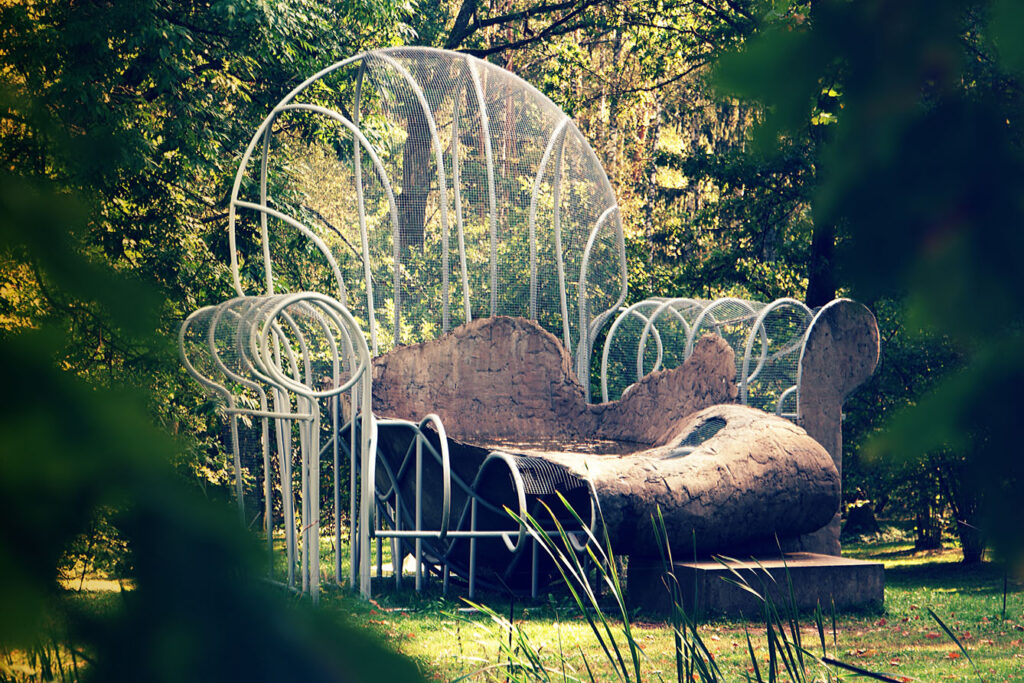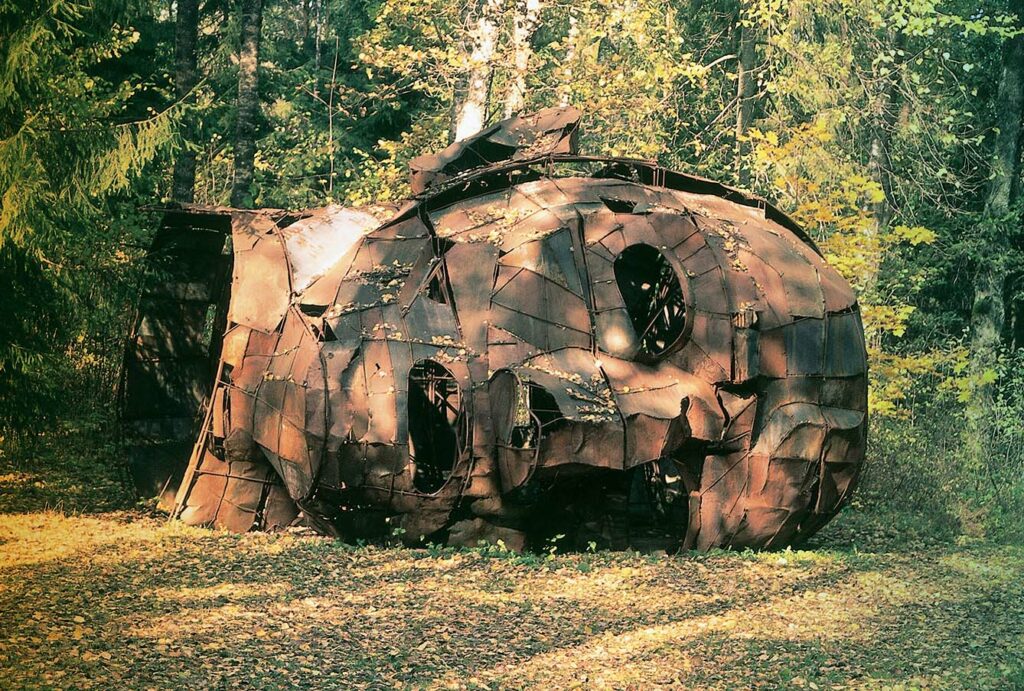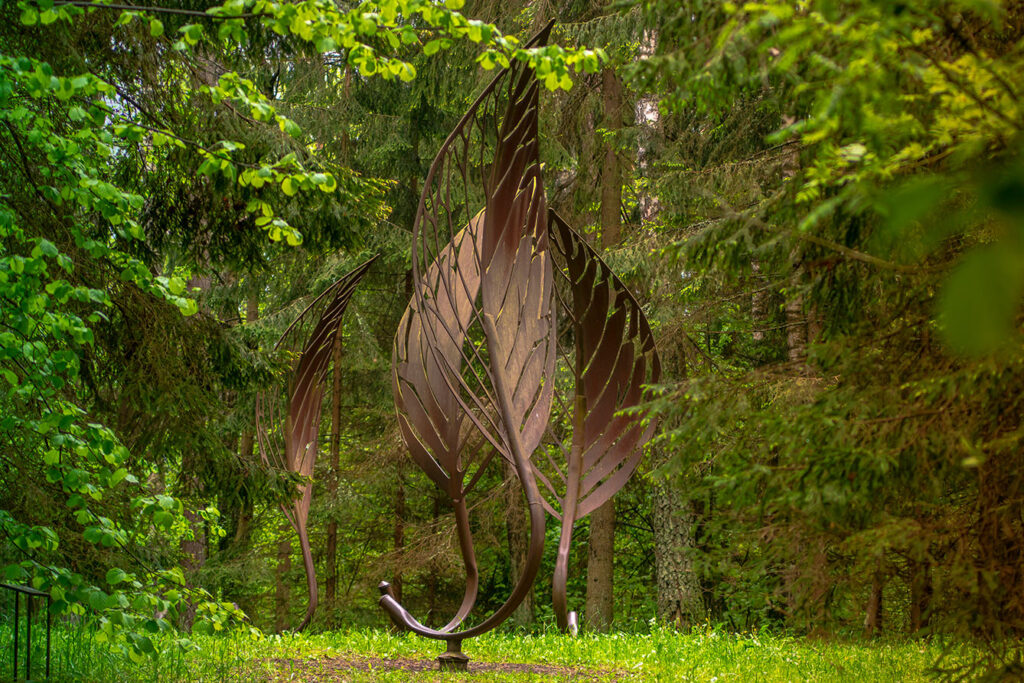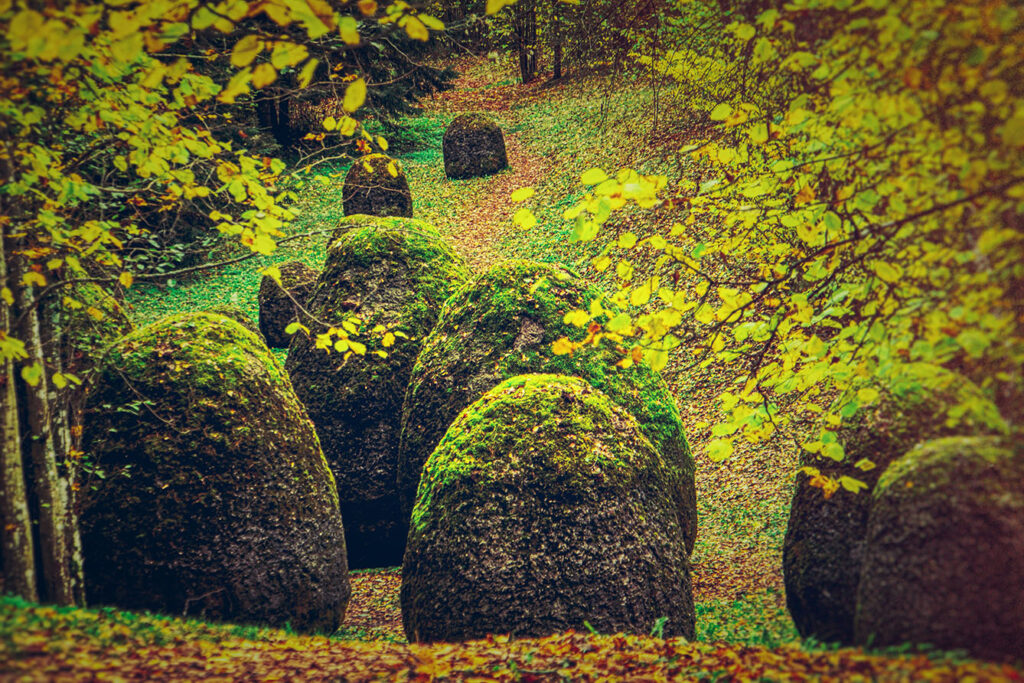There are many perks to being in the center of something, or at least that’s what people and societies tend to think. That explains constant claims to being the center-point of something, one of the rallies being that for the center of Europe. As several countries throughout history competed for the validity of their claim, the Lithuanians decided to end the discussion once and for all, turning to external experts – in this case, the French. It was the French National Geographic Institute that in 1989 determined the exact spot for the middle of the continent 10 km north of Lithuanian capital Vilnius.
Europos Park was actually conceived even before the French resolution in 1987. Gintaras Karosas, a then-19-year-old with an artistic vision, began landscaping the spot to create a sculpture museum in the open air. Currently, Karosas holds the Guinness Record for the world’s largest sculpture. It’s called LNK Infotree and is a labyrinth of nearly three thousand TV sets arranged in the form of a tree. The labyrinth is 700m long, and in its center stands a statue of Vladimir Lenin.
Famous sculptures in the (supposed) center of Europe
It was also Karosas who created the Monument of the Center of Europe. It consists of the plaques with inscribed names of the capitals of Europe and distance to its supposed center. But perhaps it’s not the centrality of the spot that grabbed the public’s attention, but the artists’ fame. Europos Park is not just another theme park with sculptural landscaping but an actual art gallery with some famous names represented in their sculpture.




It was first famous with the introduction of the work by Dennis Oppenheim in 1996, a New York-based conceptual artist famous for turning houses upside down. Europe Park has also works by such stars as Sol LeWitt, famous for structural interventions in public spaces from the early 1960s.
Europe Park: the center that moved
In Europe Park, you can also find some art by renowned Polish sculptor Magdalena Abakanowicz, well known for her outdoor installations, Czech Aleš Veselý, author of monumental sculptures connected with the landscape. Gintaras Karosas is often engaged in planning the following entries to the collection, carefully picking locations to harmonize with the environment.
The exact location for the center of Europe has since moved to another location, a few kilometers away, as French geographers noticed a mistake in their calculation. But for sure, Europos Park remains at least one of the central spots in the European land art scene.
Just so you know: there are many ways to determine the center of Europe and at some point many countries used to claim or still claim to have one – more on that in our guide to Central European centers of Europe. And you don’t have to use geometry do find the middle point – check out how Croatian Ludbreg found its way to claim one.







